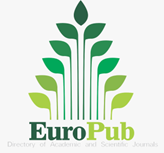Cosmic mind, universal algorithm, and efforts to build a prosperous life in the age of nanotechnology
(hindu cosmological perspective)
DOI:
https://doi.org/10.61511/lad.v1i1.2023.194Keywords:
algorithms, cosmic, jagadhita, mindAbstract
Hindu cosmology is the knowledge of the ins and outs of the universe. One topic concerns the cosmic mind and human existence on Earth. Vedic cosmology teaches that the universe has a cosmic mind and energy that builds up a large and expansive natural energy field. This energy field is often referred to as Indrajala or Indra's net. Humans and all entities are firmly connected in this net of Indra. Humans living on Earth radiate energy from their bodies and minds to the universe. The universe will accept the radiation of these thoughts and feelings. Later, the term universe algorithm emerged, which is a term that shows how the universe as a system is structured and organized. This is in line with the cosmic mind in the Vedas. The universe is likened to a sophisticated and complete computer with the laws of order in it. The universe's algorithms can easily read the signals of the human mind and provide appropriate feedback. Thus, humans determine their destiny is correct and reasonable. Because the power of the human mind is mighty and connected to the cosmic mind, this article results from literature research based on Hindu cosmology which discusses the cosmic mind, universe algorithms, and efforts to build a prosperous life. The data is obtained by reading the text using the theory of Vedic Interpretation. Data were analyzed using content analysis. The findings of this study are that the theory of the cosmic mind, the energy field known as the senses, can be studied through the phenomena of the universe's algorithm and is strongly connected with the human mind. This theory is relevant with the purpose of life on Earth, jagadhita, and continues its evolution in higher stages. As extraordinary beings, humans can do many things and build a good life, leading to awareness and enlightenment. Vedic cosmology helps to understand the laws of the universe and the cosmic energy flows that drive evolution.
References
Bhandari, S. R. (2022). The Cosmic Dance of Lord Shiva: Divulgence of Vedic Cosmology and Culture in Shiva TandavaStotram. The Outlook: Journal of English Studies. https://doi.org/10.3126/ojes.v13i1.46699
Bodewitz, H. W. (2019). Vedic Cosmology and Ethics. In Vedic Cosmology and Ethics. https://doi.org/10.1163/9789004400139
Calabrese, E. J. (2008). Converging concepts: Adaptive response, preconditioning, and the Yerkes-Dodson Law are manifestations of hormesis. In Ageing Research Reviews (Vol. 7, Issue 1). https://doi.org/10.1016/j.arr.2007.07.001
Chen, Y., & Shen, Y. (2023). A “parallel universe” scheme for crack nucleation in the phase field approach to fracture. Computer Methods in Applied Mechanics and Engineering, 403. https://doi.org/10.1016/j.cma.2022.115708
Darmayasa. (2014). Bhagavad Gita Nyanyian Tuhan. Denpasar: Yayasan Dharma Sthapanam.
Donder, I. K. (2007). Viratvidyā, Kosmologi Hindu (Penciptaan, Pemeliharaan, dan Peleburan serta Penciptaan Kembali Alam semesta). Surabaya: Pāramita.
KadekSurpi, N. (2021). Hindu Literacy: The Basic Concept of Education and the Literacy Patter in Upanisads. KnE Social Sciences, 2021, 86–96. https://doi.org/10.18502/kss.v5i7.9323
Kadjeng, I. N. (1997). Sarasamuccaya. Surabaya: Paramita.
Kauffman, S. (2016). Cosmic Mind? Theology and Science, 14(1). https://doi.org/10.1080/14746700.2015.1122324
Keller, K. (2016). Response to Stuart Kauffman: The Cosmic Mind and NIODA. Theology and Science, 14(1). https://doi.org/10.1080/14746700.2015.1122326
Maheswari,P.D. (2022) Asal-Usul, Unsur-Unsur dan Proses Penciptaan Alam Semesta serta Keteraturan yang Mengaturnya dalam Perspektif Paravidya-Aparavidya. Jurnal Agama dan Sains: Veda Jyotih 1(1), 35-56.
Melfi, A. (2019). The Root of Indian Communication Theory in the Ṛig Veda: Practical Vedānta. Bodhi: An Interdisciplinary Journal, 7. https://doi.org/10.3126/bodhi.v7i0.27902
Norelius, P.-J. (2019). Vedic Cosmology and Ethics: Selected Studies, by Henk Bodewitz. Indo-Iranian Journal, 62(4). https://doi.org/10.1163/15728536-06204002
Purani, A. B. (1963). Studies In Vedic Interpretation. Chowkhamba Sanskrit Series Office.
Schmidhuber, J. (1997). A computer scientist’s view of life, the universe, and everything. https://doi.org/10.1007/bfb0052088
Schneider, E. D., & Kay, J. J. (1994). Life as a manifestation of the second law of thermodynamics. Mathematical and Computer Modelling, 19(6–8). https://doi.org/10.1016/0895-7177(94)90188-0
Smythe, I. H. (2007). The Secret Behind “The Secret”. . Skeptic, 13(2).
Somawati,A.V.,Diantary,N.M.Y.A. (2019). Implementasi Ajaran Tri Kaya Parisudha dalam Membangun Karakter Generasi Muda Hindu di Era Digital. Jurnal Pasupati 6(1) 1-22.
Stellar, A. (2010). The Secret , by Rhonda Byrne . Journal of School Public Relations, 31(1). https://doi.org/10.3138/jspr.31.1.96
Sugiyono. (2013). Metode Penelitian Pendidikan: Pendekatan Kuantitatif, Kualitatif, dan R&D. Bandung: Alfabeta.
Sugiyono. (2012). Memahami Penelitian Kualitatif. Bandung: Alfabeta.
Surpi, N. K. (2020). Konsep Monoteisme Dalam Ṛgveda (Kajian Konsep Ketuhanan Hindu Perspektif Vedic Hermeneutic). Vidya Darśan, 2(1), 31–35.
Surpi, N. K. (2021). Konsep Dasar Pendidikan dan Literasi dalam Upanisad. In Manajemen Pendidikan Hindu Pendekatan Holistik. Brilian Internasional.
Surpi, N. K., Istriyanti, N. L. A., & Avalokitesvari, N. N. A. N. (2021). Resilience and Coping Strategy of Bhagavad-Gῑtā Readers on the Covid-19 Pandemic in Bali. In Kurukshetra University Research Journal (Arts & Humanities) (Vols. 55, I (202, Issue Special Issue on Bhagvad Gita, pp. 26–33).
Tyler, C. W. (2019). Points of Contact Between the Stappian Philosophy and Emergent Aspect Dualism. Activitas Nervosa Superior, 61(1–2). https://doi.org/10.1007/s41470-019-00039-y
Ullrey, A. M. (2016). Grim Grimoires: Pragmatic Ritual in the Magic Tantras. In ProQuest Dissertations and Theses.
WidyaSena,I.G.P.,Kiriana,I.N.,Widiasih,N.N.S. (2022) Tri Wisesa Yoga: Satyam, Sivam, Sundaram (Tiga Aspek Realisasi Holistik Menuju Kesadaran Sosio-Spiritual). Jurnal Yoga dan Kesehatan 5(1) 61-77.
Widyastuti, N. P. (2022). Metafora Indrajāla Konsep Interkonektivitas Semesta Dalam Veda. Veda Jyotih.
Zed, M. (2008). Metode Penelitian Kepustakaan (2nd ed.). Yayasan Obor Indonesia.
Downloads
Published
How to Cite
Issue
Section
Citation Check
License
Copyright (c) 2023 Ida Bagus Wika Krishna, Krishna S. Yogisvari, Ni Putu Pita Sari

This work is licensed under a Creative Commons Attribution 4.0 International License.
















